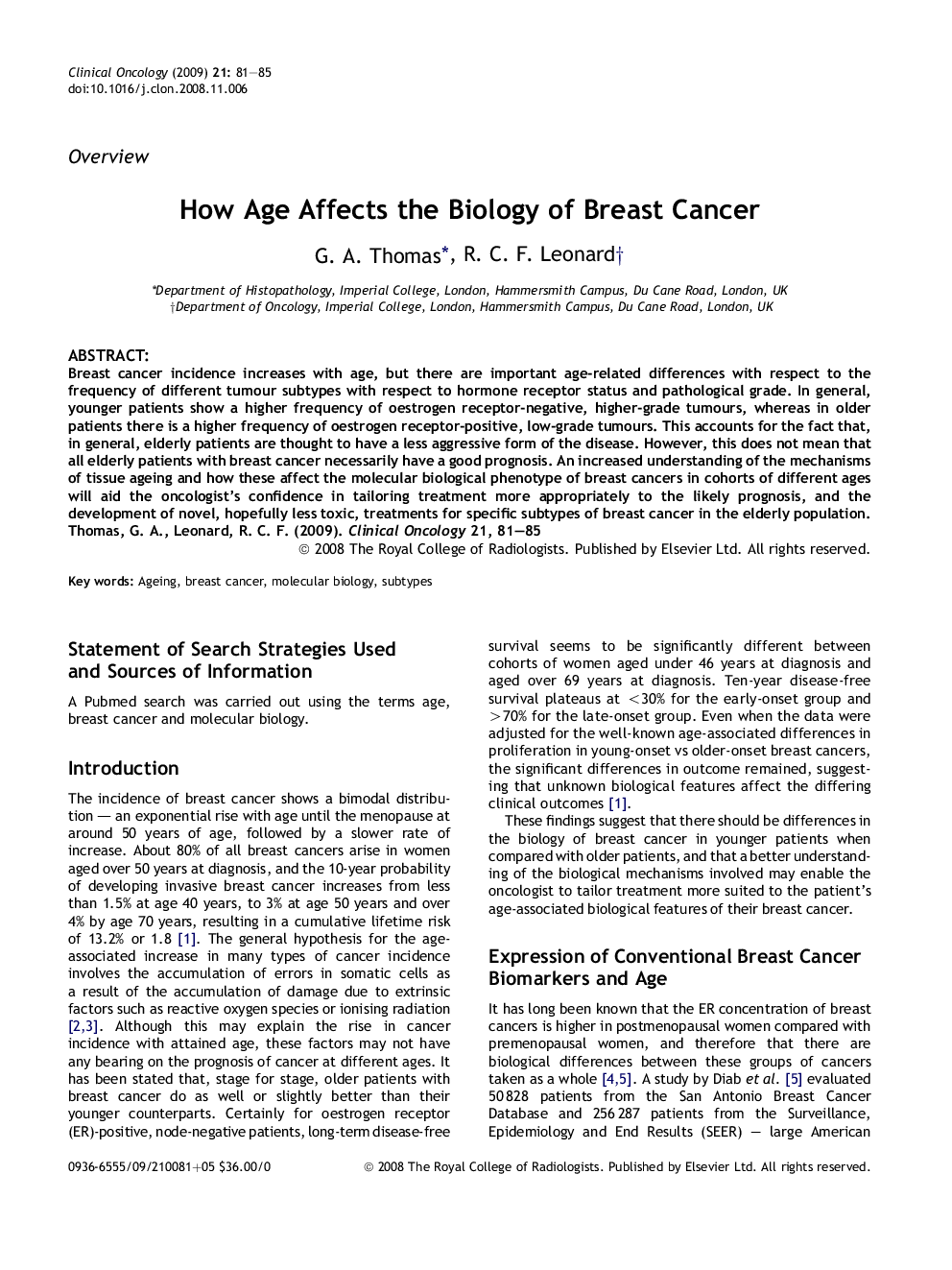| Article ID | Journal | Published Year | Pages | File Type |
|---|---|---|---|---|
| 5699484 | Clinical Oncology | 2009 | 5 Pages |
Abstract
Breast cancer incidence increases with age, but there are important age-related differences with respect to the frequency of different tumour subtypes with respect to hormone receptor status and pathological grade. In general, younger patients show a higher frequency of oestrogen receptor-negative, higher-grade tumours, whereas in older patients there is a higher frequency of oestrogen receptor-positive, low-grade tumours. This accounts for the fact that, in general, elderly patients are thought to have a less aggressive form of the disease. However, this does not mean that all elderly patients with breast cancer necessarily have a good prognosis. An increased understanding of the mechanisms of tissue ageing and how these affect the molecular biological phenotype of breast cancers in cohorts of different ages will aid the oncologist's confidence in tailoring treatment more appropriately to the likely prognosis, and the development of novel, hopefully less toxic, treatments for specific subtypes of breast cancer in the elderly population.
Related Topics
Health Sciences
Medicine and Dentistry
Oncology
Authors
G.A. Thomas, R.C.F. Leonard,
